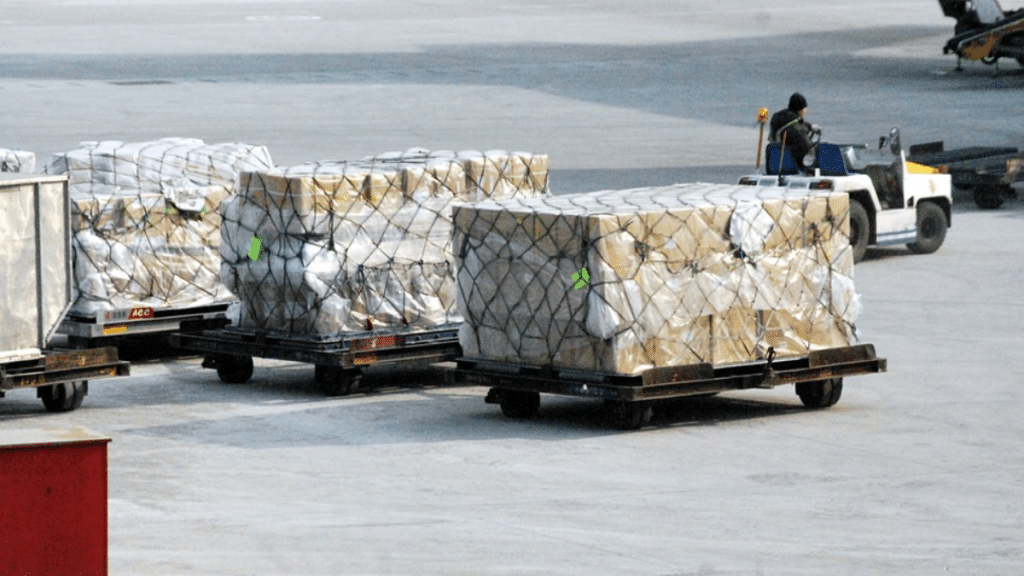Pallet wrapping is one of those handy inventions that have really changed the way traditional packaging is done. Without innovation like this, doing business can be tricky! In addition to opting for the best material handling equipment, it’s equally important to have the right pallet wrap. If you’re not entirely sure which type of pallet wrap you’ll need, this article is definitely for you.
Pallet Wrap—Pointers to Choose the Best Products
Pallet wrapping is a key aspect in keeping your parcels, products and packages safe when they’re shipped to customers, vendors and warehouses. Our experts have listed a few of the common guidelines to understand when you start shopping for the best pallet wrap options.
1. What is Pallet Wrap?
Essentially, pallet wrap is a stretchable plastic film constructed from recyclable polyethene. As the primary ingredient, a specialised resin is heated and then formed into a long, continuous film using an extension process. Additionally, further resin and pigments are added to create UV resistance and heightened tackiness.
2. Common Uses of Quality Pallet Wrap
Pallet wrap is very versatile and has a variety of uses. Its primary use is for commercial wrapping as part of packaging solutions in the transport and manufacturing industries.
Additionally, it can also be used in the following instances:
- Wrap, move or store home or office content
- Line kitchen shelves
- Keep wood bundles dry
- Waterproof boxes
- Re-seal tins to prevent varnish or paint from drying out
3. Types of Pallet Wrap
Generally, there are two types of pallet wrap, made in different ways. Both types are versatile and have different benefits.
Cast Wrap
This type of wrap is clear, glossy and simple to use. With superior cling capabilities and enhanced stretch, cast wrap enables easy identification, scanning and documentation of wrapped goods.
Blow wrap
To wrap packaging or containers with unusual shapes or sharp edges, blow wrap is a much better option than cast wrap, since the first is durable and considerably stronger. Tack, stretch and cling factors are more advanced, while tear resistance is also greater, offering more protection.
4. Measurements
The length of the roll of pallet wrap is measured in meters. The strength of the material is measured in microns. Essentially, a micron measurement (written as mu) refers to the thickness of the material, stated in terms of thousandths of a millimetre.
Microns of pallet wraps range from 12 – 30 mu and the thickness you need depends on the application. For heavy loads, you’ll want a thicker version, since it will reduce the likelihood of packaging getting punctured or torn.
5. Machine for Application
If your employees are wrapping packages manually, you’re undoubtedly aware that it can result in inefficient usage and costly wastage. Opting for quality pallet wrappers will reduce wastage and optimise your packaging operations.
6. Consider Different Colours
If you’re working in a warehouse environment it may be a good idea to opt for colour-coded pallet wrap. This will make it considerably easier to identify different pallets in the warehouse which in turn reduces disorganisation and confusion. Additionally, valuable items can be wrapped in black pallet wrap to keep package contents private and even avoid theft.
7. Be Sure to Label Your Wrap
Adding labels to your wrapping is an excellent way to let warehouse teams and package recipients know that the contents are fragile. Furthermore, adding doculopes (similar to plastic folders) will make it easy to place an invoice or waybill on the package. Using doculopes will also keep the documents dry.
8. Correct Wrapping Keeps Pallets Dry
Another good reason to wrap your parcels in pallet wrap is that a strong enough micron version will keep the contents inside dry. While you may ensure that your parcel contents are kept dry, you have no way of knowing what they’re exposed to between your warehouse and the customer’s premises. For added protection, add pallet tops on top of the package before wrapping.
9. Use Corner Protection Before Wrapping
If you’ve ever loaded or unloaded vehicles, then you’ll know that parcel and package corners are most at risk of being damaged, which can result in the contents being ruined too. To avoid this, consider adding pallet corner boards before you add the final layer of pallet wrap.
In addition to adding security to the products in the packaging, corner boards make it considerably easier to stack pallets on top of each other. In some instances, you’ll easily be able to stack several pallets because the boards will increase stability.
Final Thoughts
The correct packaging plays a major role in ensuring that products reach their destination safely and undamaged. Pallet wrap, used with a quality pallet wrapping machine, is the perfect way to create an effective packing solution. Reduce your packaging costs and simplify your processes by investing in the right equipment, sooner rather than later!

